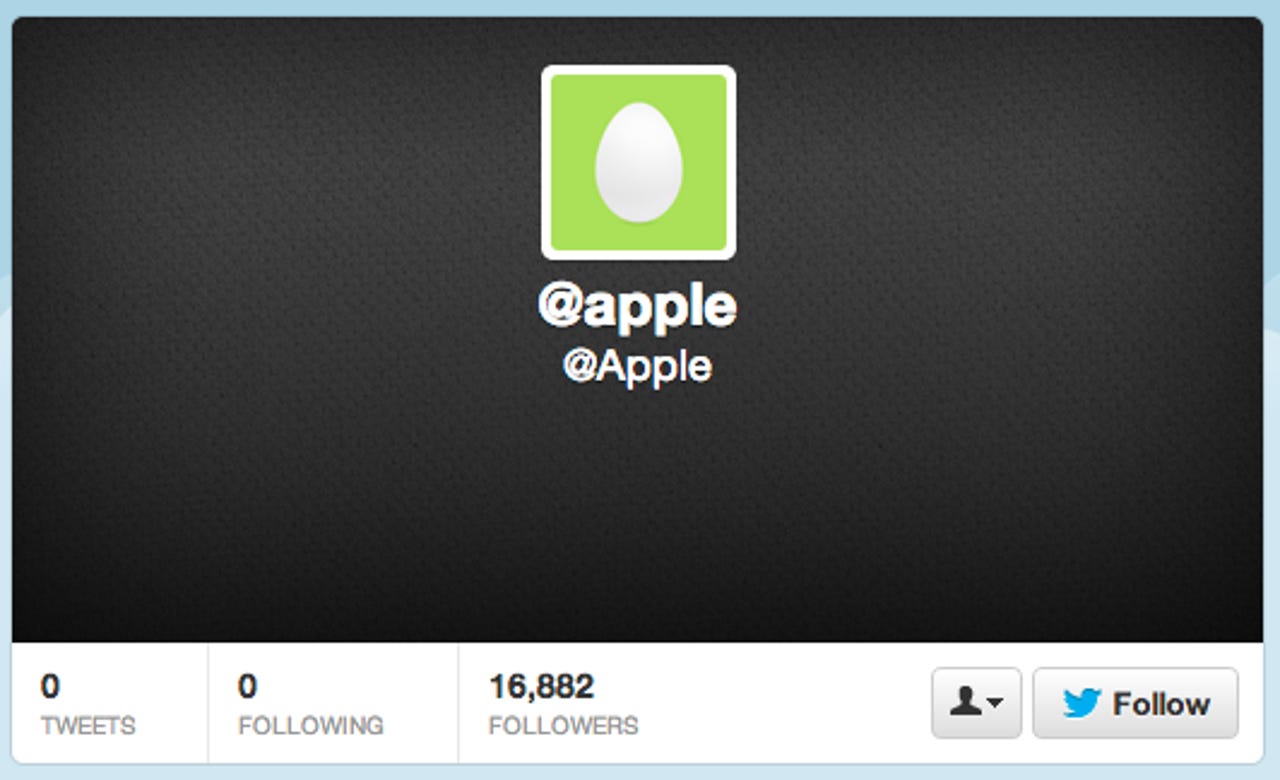Microsoft's Twitter-based tech support puts Apple in the shade

I can't say enough good things about Twitter. If you don't use Twitter, you really should. It's an amazing, life-changing thing.
But if you're running a business that sells products out there into consumerland, Twitter offers some tangible benefits by making it very easy to proactively reach out to existing customers that are struggling, or creating an easier-to-access channel to create help.
Microsoft does this with gusto and to great effect across all of its brands.
But Apple doesn't even try. It doesn't even have a proper Twitter account. This is what @Apple looks like:

On the other hand, this is what @XboxSupport looks like:
And yes, that's not a joke, @XboxSupport really is the Guinness World Record holder for the "Most responsive brand on Twitter." (Although that record was set in 2010, which in internet years is like a thousand years ago, but still, impressive.)
Benefits
The first advantage to Apple would be being able to reach out to people like @ArghMyLife, who this morning tweeted the following diatribe:
If Apple were actually monitoring their social media, they'd be able to reach out to her and do something about that. But they don't, so all that's going to happen is she's going to spend the rest of the day annoyed, and still have a broken phone.
And then what's next? Windows Phone purchase? Android? Or another iPhone? And we know how this works — what about her friends? "Oh no, I had a lousy experience when my iPhone went wrong..."
I should say that finding examples of Microsoft being proactive in their support is tricky, as they deal with a lot of reactive queries. (The reason why I know they do this reactive support is that they've pinged me a few times when I've moaned about various Microsoft products on Twitter.)
Anyway, here's an example of part of a conversation with @WinPhoneSupport. There are hundreds and hundreds of these.
And the response time is good. There's an average time of around two minutes between each of these replies. That's enough to feel engaged, but not too stressful for Microsoft to manage.
Technical support is always difficult. Phoning someone up is always a pain, always costly in terms of time and often costly in terms of money. Live chat is better, but demands an immediacy of response from the vendor that is difficult to achieve when engineers are fielding multiple chats at once.
Doing technical support like this on Twitter is quick and easy for the customer, and I suspect much easier to manage for the vendor because of expectations around how the channel works.
The only problem with it is that it's very public — it's easy for everyone to see what people are complaining about and struggling with.
Software
Microsoft havs a number of dedicated teams that do this kind of support explicitly: @WinPhoneSupport, @XboxSupport, @MicrosoftHelps, @WindowsSupport.
Social media teams on @Office, @Surface, and @Microsoft will also dip in to help customers.
Interestingly, it appears that Microsoft use its own software to do this kind of support, despite off-the-shelf software being available for this. HootSuite is one that's commonly used.
Although the official Twitter clients no longer report which software was used to post tweets onto the platform, this data is still available within the APIs.
@WinPhoneSupport and @XboxSupport both use the same "XCSWatchtower," whereas @MicrosoftHelps and @WindowsSupport use a client called "Microsoft Helps." @Office uses a client called "_Microsoft," and perhaps peculiarly @Surface uses its own "Microsoft_Surface,"
Of course, these may all be branches of the same software. What's relevant here is that they are homegrown systems, which implies a cost involved, which in turn implies a non-trivial level of seriousness about doing technical support over social media.
Just in case you were wondering whether it's possible to run the social media of a multi-billion dollar global IT empire on free software, you certainly can. @Microsoft uses TweetDeck, one of the official Twitter clients.
There are also examples of various Microsoft Twitter accounts using Sprinklr. Sprinklr is a product designed to support large enterprises with their social media engagement. So it's not all homegrown stuff.
Read: Sprinklr raises $15m; social media management for the enterprise
Conclusion
I think what's so surprising about all this is that it's so obvious, so easy, and yet Apple seems to be studiously avoiding doing anything in the social media space at all.
If you Google around, you'll find a bunch of accounts purporting to do Apple support. None are verified by Twitter, most offer very shady responses to their interactions, and at least one is NSFW. But there isn't even a Twitter account spouting marketing messages about Apple's products.
But then, what about Google? There is an @Google account, but they don't do support over it. (And if you're wondering, Google doesn't even use a Twitter client — all of the posts on @Google are done through the Twitter website!)
Social media support of consumer products provides benefits to both the customers and the vendors. It allows vendors to proactively find customers who are unhappy and make them happy, and provides a reactive channel that's easier to use than the phone, live chat, or ticketing systems.
Apple should totally add this to their repertoire of traditional technical support systems.
And Apple should totally buy that @Apple account. That's someone's retirement plan right there.
What do you think? Post a comment, or talk to me on Twitter: @mbrit.